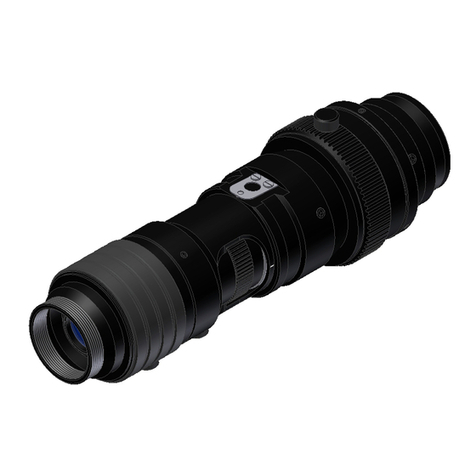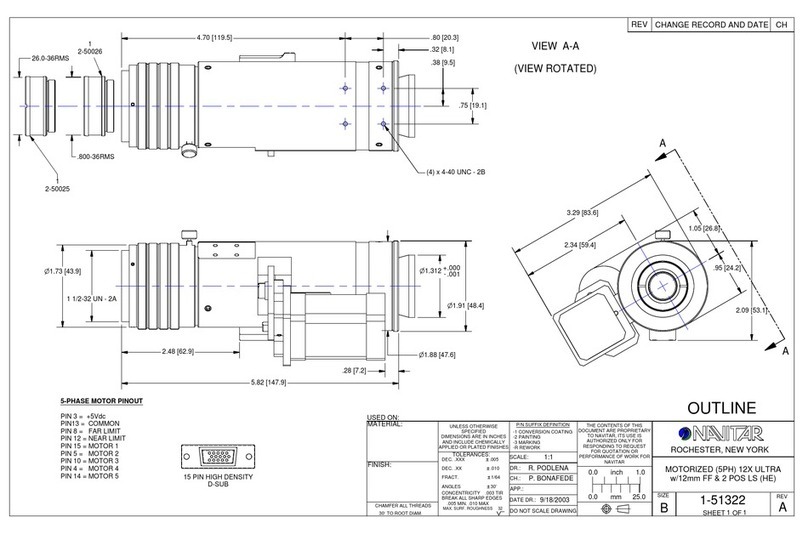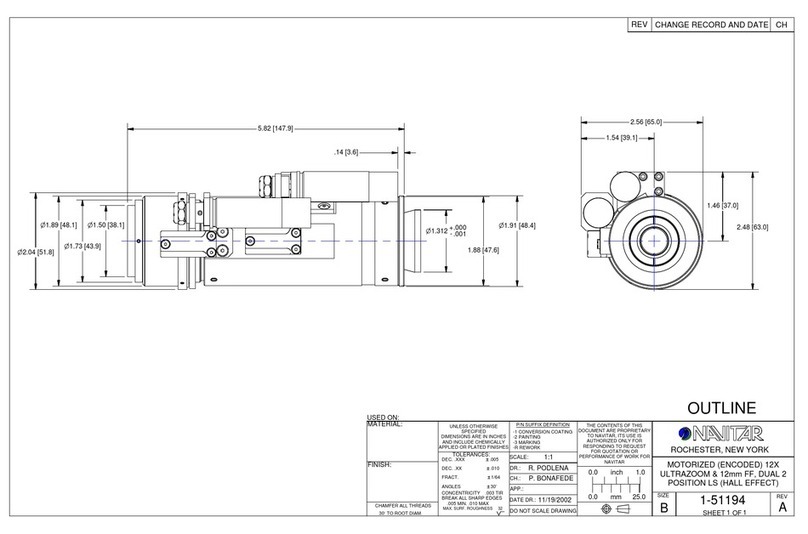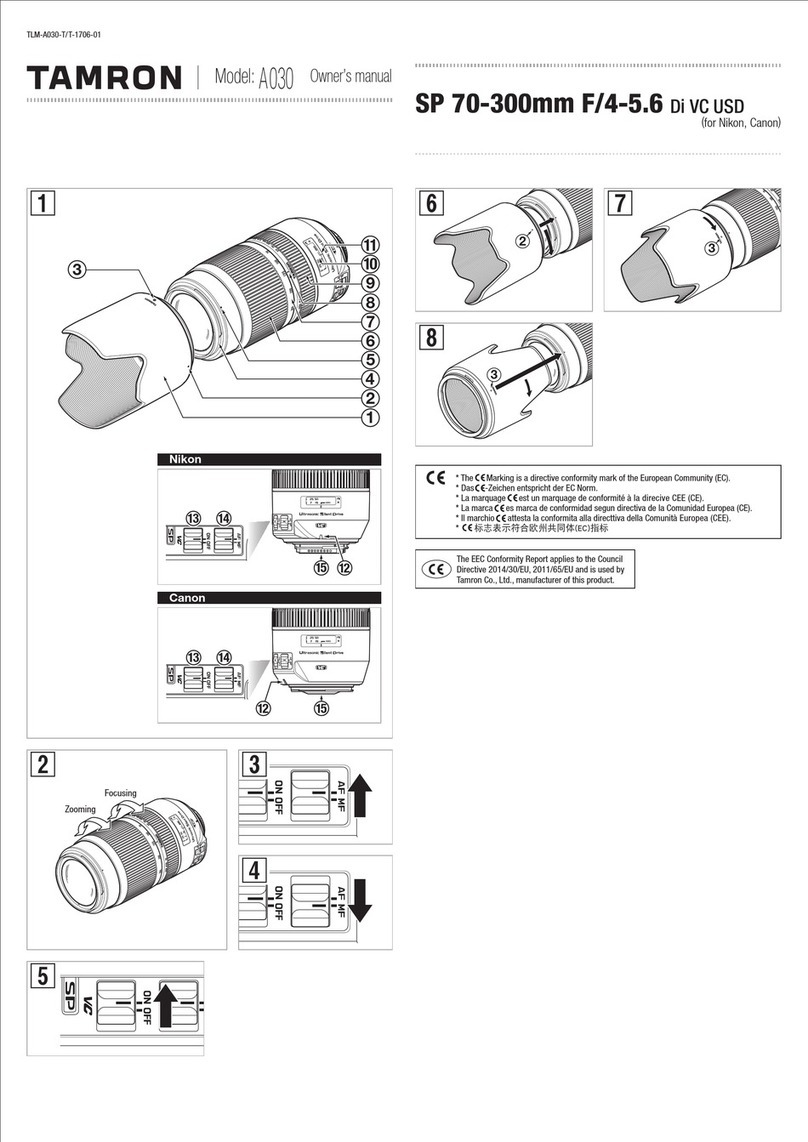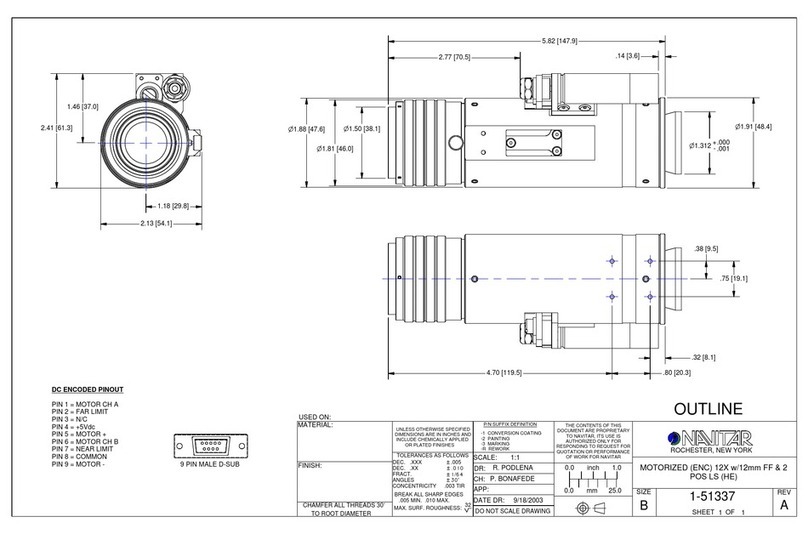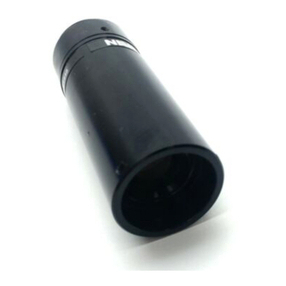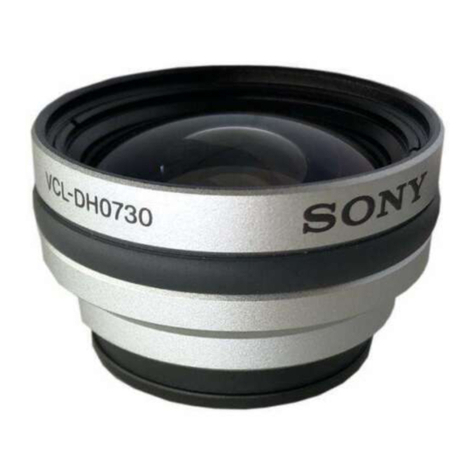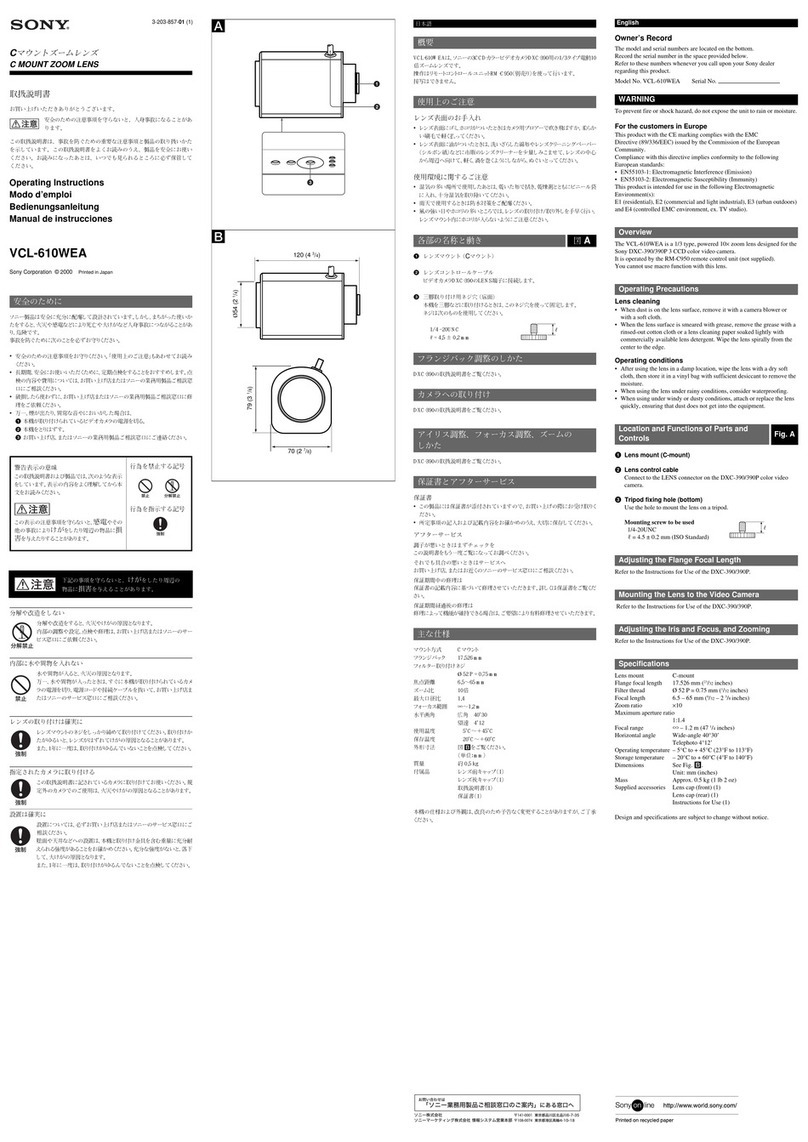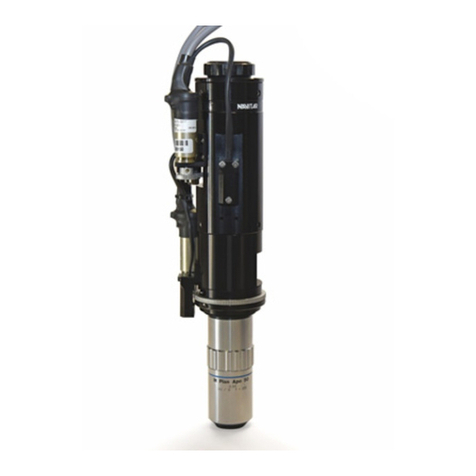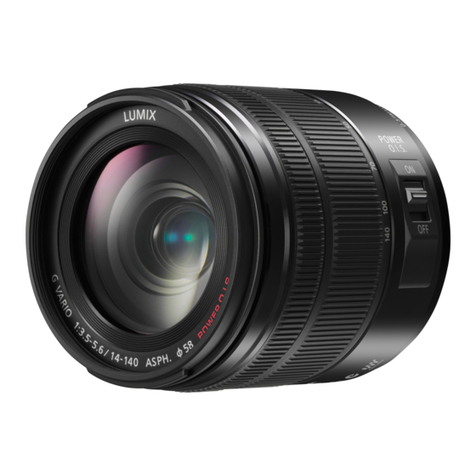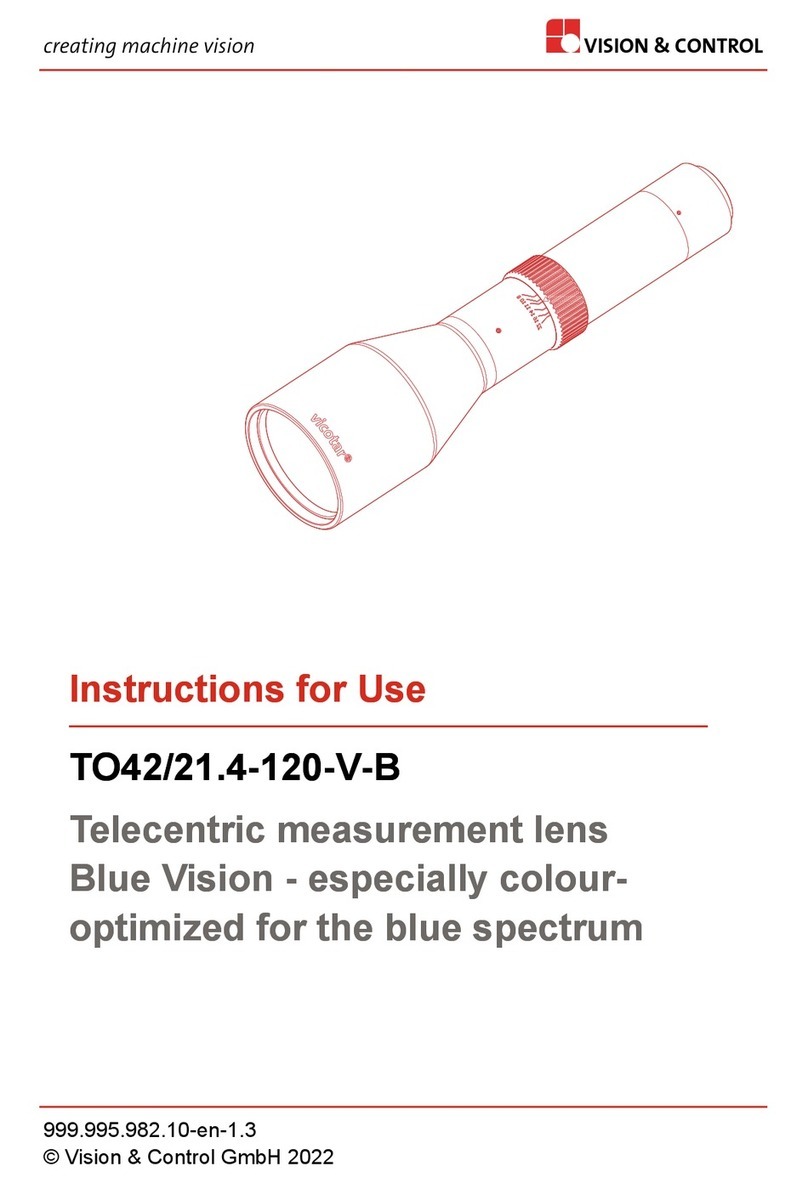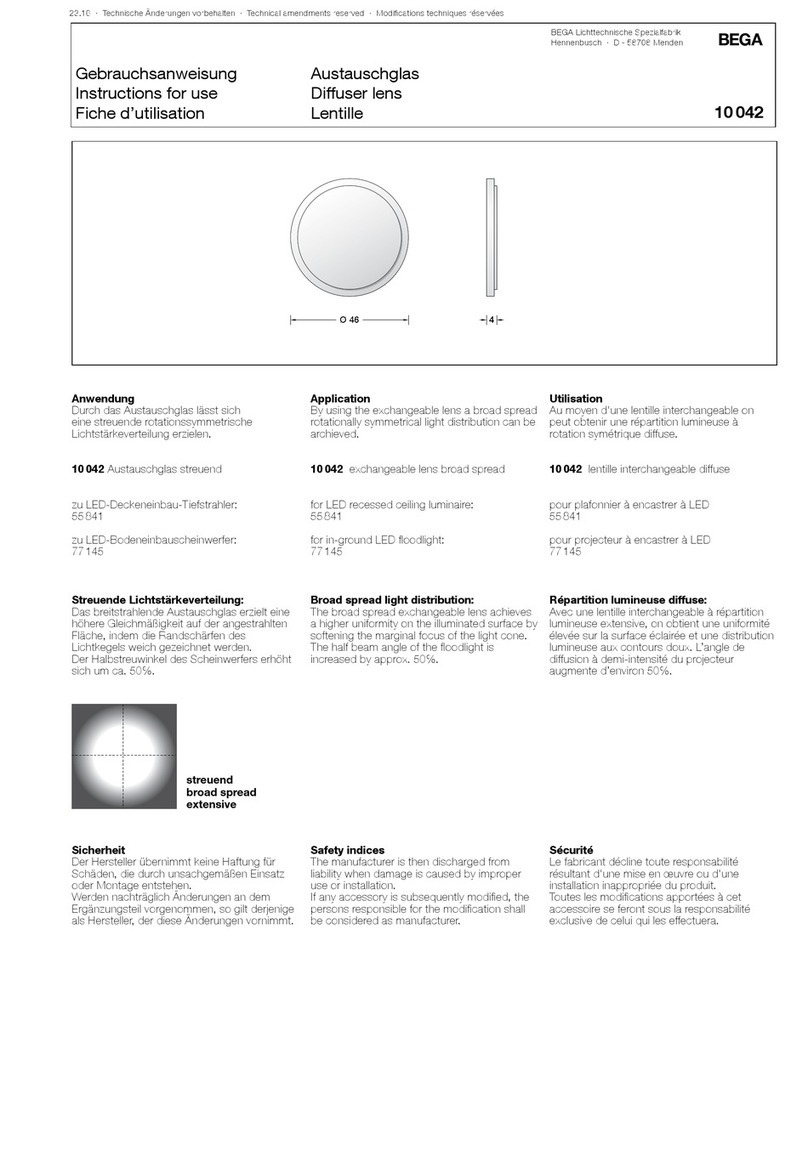Bausch & Lomb PuerVision2 User manual

Printed in the U.S.A. Effective as of March 2017 (2017-03-31)
Name and Address of Manufacturer:
Bausch & Lomb Incorporated
1400 North Goodman Street
Rochester, New York, USA 14609 8129102
ATTENTION: Read and save the enclosed information.
Store lenses at room temperature (60°F – 80°F / 15°C – 25°C).
CAUTION: Federal law restricts this device to
sale by or on the order of a licensed practitioner.
PATIENT INFORMATION BOOKLET

PATIENT INFORMATION BOOKLET
TABLE OF CONTENTS
Introduction .........................................................................................................................................................................................................................2
Wearing Restrictions and Indications....................................................................................................................................................................2
Contraindications (Reasons Not To Use)...........................................................................................................................................................3
Warnings...............................................................................................................................................................................................................................3
Precautions..........................................................................................................................................................................................................................4
Adverse Reactions (Problems and What To Do)...........................................................................................................................................5
Clinical Studies..................................................................................................................................................................................................................5
Personal Cleanliness and Lens Handling............................................................................................................................................................6
Preparing the Lens for Wearing...................................................................................................................................................................6
Handling the Lenses...........................................................................................................................................................................................6
Placing the Lens on the Eye............................................................................................................................................................................6
Centering the Lens..............................................................................................................................................................................................7
Removing the Lens..............................................................................................................................................................................................7
Lens Wearing Schedules ............................................................................................................................................................................................ 8
Caring for Your Lenses (Cleaning, Rinsing, Disinfecting, Enzyming, Storage and Rewetting/Lubricating)................ 8
Soaking and Storing Your Lenses............................................................................................................................................................... 8
Rub and Rinse Time............................................................................................................................................................................................ 8
Lens Case Care................................................................................................................................................................................................... 8
Water Activity.........................................................................................................................................................................................................9
Discard Date on Solution Bottle...................................................................................................................................................................9
Basic Instructions..................................................................................................................................................................................................9
Chemical (Not Heat) Disinfection..............................................................................................................................................................9
Lens Deposits and Use of Enzymatic Cleaning Procedure.........................................................................................................9
Care for a Sticking (Nonmoving) Lens...................................................................................................................................................10
Care for a Dried Out (Dehydrated) Lens..............................................................................................................................................10
Emergencies..........................................................................................................................................................................................................10
Lens Care Product Chart...........................................................................................................................................................................................10
Instructions for the Multi-Focal or Monovision Wearer.............................................................................................................................1 1
Symbol Reference Guide...........................................................................................................................................................................................1 1
Personal Wearing Schedule Record....................................................................................................................................................................12
Check-Up Visits...............................................................................................................................................................................................................13
Visit Schedule....................................................................................................................................................................................................................13
Eye Care Professional Information........................................................................................................................................................................13
Glossary of Medical Terms........................................................................................................................................................................................14

2
INTRODUCTION
The instructions in this booklet apply to the
Bausch + LombPureVision®2 for Astigmatism
(balafilcon A) Visibility Tinted Contact Lenses. If you
have received or are considering another brand of
contact lenses, do not use this booklet. Ask your eye
care professional for the patient booklet or instructions
that apply to your brand or type of contact lenses.
For Bausch + LombPureVision®2 for Astigmatism
(balafilcon A) Contact Lenses, it is essential to your
safety that you read and understand the information
and instructions in this booklet, and have your eye care
professional answer any questions, both before and
after you receive contact lenses.
Wearing contact lenses is different from wearing
eyeglasses. Because they are worn directly on your
eyes, contact lenses affect the way in which your
eyes function. These effects tend to increase with the
length of time that the lenses remain on your eyes
between removals. Although the great majority of
people successfully wear contact lenses without
problems, before you decide whether to begin or
to continue wearing contact lenses for daily wear,
or continuous wear, you should discuss with your
eye care professional the effects of contact lenses
on your eyes and the risks associated with wearing
contact lenses, which are greater with continuous
wear contact lens use. You also should read the
sections of this booklet entitled “Warnings”, “Adverse
Reactions”, “Precautions”, and “Wearing Restrictions
and Indications.” Ask your eye care professional to
explain anything that you do not understand, including
any additional restrictions which may be given to you
by your eye care professional.
You also need to remember that soft contact lenses,
including those covered by this booklet, are made of
a type of plastic that absorbs liquids, vapors, and small
particles, and, for some people, may collect deposits
from your natural eye fluids. Therefore, you should
strictly follow the instructions contained in the sections
of this booklet entitled “Personal Cleanliness and Lens
Handling”, as well as the written information leaflets
accompanying the lens care products that you buy and
any other instructions given to you by your eye care
professional. Any failure to follow these instructions
and the wearing restrictions will increase the chances
of contamination, damage to the lenses, or a build-up
of deposits on the lenses, which can lead to serious,
sight-threatening eye infections and injuries.
Adherence to your prescribed wearing schedule and
replacement schedule, and regular check-up visits to
your eye care professional are also necessary for the
proper and safe use of contact lenses.
It is important to not wear your lenses longer
than recommended by your eye care professional
since doing so increases the risk of adverse
effects.
Spaces are provided in the back of this booklet
for you to record your personal wearing schedule
and schedule of follow-up visits. Soft contact lenses
generally are comfortable from the beginning.
Therefore, be sure to follow the wearing schedule
prescribed for you, and do not wear your lenses for
longer periods than your prescribed wearing schedule
simply because they remain comfortable and you
are not experiencing a problem. Only your eye care
professional, through a professional examination,
can determine how your eyes are reacting to the
contact lenses and whether there are any early signs of
possible problems.
If problems or symptoms should occur, immediately
remove your lenses and follow the steps described
in the section of this booklet entitled “Warnings” and
“Adverse Reactions”. (Refer to “Glossary of Medical
Terms” for description of medical terms used in this
booklet). Prompt attention to problems is essential and
may require immediate professional care.
Remember, when wearing soft contact lenses your
eyes should look and feel good, and your vision should
be clear.
WEARING RESTRICTIONS
AND INDICATIONS
VISION CORRECTION
The Bausch + Lomb PureVision®2 for Astigmatism
(balafilcon A) Visibility Tinted Contact Lens is
indicated for daily wear or extended wear from
1 to 30 days between removals for cleaning and
disinfection or disposal of the lens, as recommended
by the eye care professional. The lens is indicated
for the correction of refractive ametropia (myopia,
hyperopia and astigmatism) in aphakic and/or not-
aphakic persons with non-diseased eyes, exhibiting
astigmatism of 5.00 diopters or less, that does not
interfere with visual acuity. The lens may be prescribed
for Frequent / Planned Replacement or Disposable
Wear in spherical powers ranging from +6.00D
to –9.00D when prescribed for up to 30 days of
extended wear and from +20.00D to –20.00D for
daily wear or extended wear up to 7 days.
FREQUENT / PLANNED
REPLACEMENT WEAR
When prescribed for Frequent / Planned
Replacement Wear, the Bausch + Lomb
PureVision®2 for Astigmatism (balafilcon A)
Visibility Tinted Contact Lens is to be cleaned,
rinsed and disinfected each time it is removed
from the patient’s eye and discarded after the
recommended wearing period prescribed
by the eye care professional. The lens may be
disinfected using a chemical disinfection system.
DISPOSABLE WEAR
When prescribed for Disposable Wear, the
Bausch + LombPureVision®2 for Astigmatism
(balafilcon A) Visibility Tinted Contact Lens is to
be discarded after each removal.

3
WEARING RESTRICTIONS
Bausch + LombPureVision®2 for Astigmatism
(balafilcon A) Visibility Tinted Contact Lenses
described in this booklet should be removed from
your eyes for routine cleaning and disinfecting
as prescribed by your eye care professional. For
extended wear, once the lenses are removed,
your eyes should have a rest without lens wear
for at least one overnight, as recommended
by your eye care professional. Your eye care
professional will tell you how long to rest your eyes in
between wearing periods and will also recommend
a replacement period and appropriate lens care
products.
CONTRAINDICATIONS
(REASONS NOT TO USE)
DO NOT USE Bausch + LombPureVision®2 for
Astigmatism (balafilcon A) Visibility Tinted Contact
Lenses when any of the following conditions exist:
• Acuteandsubacuteinflammationorinfectionof
the anterior chamber of the eye
• Anyeyedisease,injury,orabnormalitythataffects
the cornea, conjunctiva, or eyelids
• Severeinsufficiencyoflacrimalsecretion(dryeyes)
• Cornealhypoesthesia(reducedcornealsensitivity)
• Anysystemicdiseasethatmayaffecttheeyeorbe
exaggerated by wearing contact lenses
• Allergicreactionsofocularsurfacesoradnexa
(surrounding tissue) that may be induced or
exaggerated by wearing contact lenses or use of
contact lens solutions
• Allergytoanyingredient,suchasmercuryor
Thimerosal, in a solution which is to be used to care
for Bausch + LombPureVision®2 for Astigmatism
(balafilcon A) Visibility Tinted Contact Lenses
• Anyactivecornealinfection(bacterial,fungal,or
viral)
• Ifeyesbecomeredorirritated
WARNINGS
You should be aware of and fully discuss with your eye
care professional the following warnings pertaining to
contact lens wear:
• Problemswithcontactlensesandlenscare
products could result in serious injury to your
eye. It is essential that you follow your eye care
professional’s direction and all labeling instructions
for proper use of lenses and lens care products,
including the lens case. Eye problems, including
corneal ulcers, can develop rapidly and lead to loss
of vision.
• Strict compliance with your lens care regimen
including cleaning of the lens case, wearing
restrictions, wearing schedule, and follow-up visit
schedule must be followed.
• Studies have shown that contact lens wearers who
are smokers have a higher incidence of adverse
reactions than nonsmokers.
EXTENDED WEAR:
• The risk of microbial keratitis has been shown to be
greater among users of continuous wear contact
lenses than among users of daily wear contact
lenses.
Some researchers believe that these complications
are caused by one or more of the following: a
weakening of the cornea’s resistance to infections,
particularly during a closed-eye condition, as
a result of hypoxia; an eye environment which
is somewhat more conducive to the growth of
bacteria and other microorganisms, particularly
when a regular periodic lens removal and
disinfecting or disposal schedule has not
been adhered to by the patient; improper
lens disinfection or cleaning by the patient;
contamination of lens care products; poor personal
hygiene by the patient; patient unsuitability to the
particular lens or wearing schedule; accumulation
of lens deposits; damage to the lens; improper
fitting; length of wearing time; and the presence of
ocular debris or environmental contaminants.
While the great majority of patients successfully
wear contact lenses, continuous wear of lenses also
is reported to be associated with a higher incidence
and degree of epithelial microcysts and infiltrates,
and endothelial polymegathism, which require
consideration of discontinuation or restriction of
continuous wear. The epithelial conditions are
reversible upon discontinuation of continuous wear.
The long term risk of microbial keratitis has
not been determined for this lens. A post-
approval study with average follow-up of 15
months has been completed.
• The reversibility of endothelial effects of contact
lens wear has not been conclusively established.
As a result, practitioners’ views of continuous
wearing times vary from not prescribing continuous
wear at all to prescribing flexible wearing times
from occasional overnight wear to prescribing
continuous wearing periods from 1 to 30 days
with specified intervals of no lens wear for certain
patients, with follow-up visits, and with proper care
regimen.
• Ifyouexperienceeyediscomfort,excessive
tearing, vision changes, or redness of the eye, you
should immediately remove lenses and promptly
contact your eye care professional.

4
PRECAUTIONS
You should be aware of and fully discuss with your eye
care professional the following lens care regimen and
safety precautions:
SPECIFIC PRECAUTIONS:
• Alwaysdiscarddisposablelensesandlensesworn
on a frequent / planned replacement schedule
after the recommended wearing schedule
prescribed by the eye care professional.
HANDLING PRECAUTIONS:
• Alwayswashandrinsehandsbeforehandling
lenses. Do not get cosmetics, lotions, soaps,
creams, deodorants, or sprays in the eyes or on the
lenses. It is best to put on lenses before putting on
makeup. Water-base cosmetics are less likely to
damage lenses than oil-base products.
• Beforeleavingyoureyecareprofessional’soffice
be certain that you are able to remove your lenses
promptly or have someone else available to
remove them for you.
• Becertainthatthefingersorhandsarefreeof
foreign materials before touching your lenses, as
microscopic scratches of the lenses may occur,
causing distorted vision and/or injury to the eye.
• Alwayshandleyourlensescarefullyandavoid
dropping them.
• Donottouchthelenswithyourfingernails.
• Carefullyfollowthehandling,insertion,removal,
cleaning, disinfecting, storing and wearing
instructions in this booklet and those prescribed by
your eye care professional.
• Neverusetweezersorothertoolstoremoveyour
lenses from the lens container unless specifically
indicated for that use. Pour the lens into the hand.
SOLUTION PRECAUTIONS:
• Do not use the Allergan Ultracare
Disinfecting System or any of its
components (Ultracare Disinfecting
Solution, Ultracare Neutralizing Tablets,
Lens Plus Daily Cleaner, and Ultrazyme
Enzymatic Cleaner) to clean and
disinfect Bausch + LombPureVision®2
for Astigmatism (balafilcon A) Visibility
Tinted Contact Lenses because the lens
dimensions will be altered.
Note: Eye injury due to irritation or infection may result from lens
contamination. To reduce the risk of contamination, review the
appropriate manufacturer’s labeled lens care instructions.
• Always use fresh unexpired lens care solutions.
• Alwaysfollowdirectionsinthepackageinsertsfor
the use of contact lens solutions.
• Sterileunpreservedsolutions,whenused,should
be discarded after the time specified in the labeling
directions.
• Alwayskeepthelensescompletelyimmersedin
the recommended storage solution when lenses
are not being worn (stored). Prolonged periods
of drying will damage lenses. Follow the lens care
directions for Care for a Dried Out (Dehydrated)
Lens if lens surface does become dried out.
• Donotusesalivaoranythingotherthanthe
recommended solution for lubricating or wetting
lenses.
• Tapwater,distilledwaterorhomemadesaline
should not be used as a substitute for any
component in the lens care regimen since they
have been associated with an Acanthamoeba
keratitis infection.
• Neveruseconventionalhardcontactlenssolutions
that are not also recommended for use with
prescribed lenses.
• Donotmixoralternatelenscaresystemsor
solutions unless indicated in the lens care system
labeling.
• Donotheatthechemicaldisinfectionsolutionor
lenses.
LENS WEARING PRECAUTIONS:
• Neverwearyourlensesbeyondtheperiod
recommended by your eye care professional.
• Ifthelenssticks(stopsmoving)ontheeye,follow
the recommended directions on Care for a
Sticking (Nonmoving) Lens. The lens should move
freely on the eye for the continued health of the eye.
If nonmovement of the lens continues, you should
immediately consult your eye care professional.
• Avoid,ifpossible,allharmfulorirritatingvaporsand
fumes when wearing lenses.
• Ifaerosolproductsareusedwhilewearinglenses,
exercise caution and keep eyes closed until the
spray has settled.
LENS CASE PRECAUTIONS:
• Contactlenscasescanbeasourceofbacterial
growth. To prevent contamination and to help avoid
serious eye injury, always empty and rinse the lens
case with fresh, sterile rinsing solution and allow to
air dry.
• Lenscasesshouldbereplacedatmonthlyintervals
or as recommended by the lens case manufacturer
or eye care professional.
TOPICS TO DISCUSS WITH THE
EYE CARE PROFESSIONAL:
• Aswithanycontactlens,follow-upvisitsare
necessary to assure the continuing health
of the eyes. You should be instructed as to a
recommended follow-up schedule.
• Patientsshouldbeadvisedaboutwearinglenses
during sporting and water related activities.
Exposure to water while wearing contact lenses
in activities such as swimming, water skiing and
hot tubs may increase the risk of ocular infection
including, but not limited to, Acanthamoeba
keratitis.
• Alwayscontactyoureyecareprofessionalbefore
using any medicine in the eyes.

5
WHO SHOULD KNOW THAT YOU
ARE WEARING CONTACT LENSES:
• Informyourdoctor(healthcareprofessional)about
being a contact lens wearer.
• Alwaysinformyouremployerofbeingacontact
lens wearer. Some jobs may require the use of eye
protection equipment or may require that you not
wear lenses.
Ask your eye care professional whether there are
any other wearing restrictions that apply to you. Write
those restrictions in the spaces provided below and
follow them carefully:
_______________________________________
_______________________________________
_______________________________________
_______________________________________
ADVERSE REACTIONS
(PROBLEMS AND
WHAT TO DO)
YOU SHOULD BE AWARE THAT THE
FOLLOWING PROBLEMS MAY OCCUR:
• Eyesstinging,burning,itching(irritation),orother
eye pain
• Comfortislessthanwhenlenswasfirstplacedon
eye
• Abnormalfeelingofsomethingintheeye(foreign
body, scratched area)
• Excessivewatering(tearing)oftheeyes
• Unusualeyesecretions
• Rednessoftheeyes
• Reducedsharpnessofvision(poorvisualacuity)
• Blurredvision,rainbows,orhalosaroundobjects
• Sensitivitytolight(photophobia)
• Dryeyes
IF YOU NOTICE ANY OF THE
ABOVE, YOU SHOULD:
•Immediately remove your lenses.
• Ifthediscomfortorproblemstops,thenlook
closely at the lens. If the lens is in any way damaged,
do not put the lens back on your eye. Place the
lens in the storage case and contact your eye care
professional. If the lens has dirt, an eyelash, or other
foreign body on it, or the problem stops and the
lens appears undamaged, you should thoroughly
clean, rinse, and disinfect the lenses; then reinsert
them. After reinsertion, if the problem continues,
you should immediately remove the lenses and
consult your eye care professional.
When any of the above problems occur, a
serious condition such as infection, corneal ulcer,
neovascularization, or iritis may be present. You should
keep the lens off your eye and seek immediate
professional identification of the problem and prompt
treatment to avoid serious eye damage.
CLINICAL STUDIES
The following clinical results are provided for
informational purposes. It is important to note that
the results below are from studies conducted with
the Bausch + Lomb PureVision®(balafilcon A)
Visibility Tinted Contact Lens which has the same
lens material, but different lens design. These studies
were conducted with subjects not requiring astigmatic
correction.
PRE-APPROVAL EXTENDED WEAR STUDY
STUDY DESCRIPTION
A 12-month clinical study of the Bausch + Lomb
PureVision (balafilcon A) Visibility Tinted Contact
Lenses showed the lens is safe and effective for vision
correction for up to 30 days of continuous wear.
A total of 820 subjects were enrolled in the clinical
study. Six hundred ten (610) subjects completed the
one-year study. Subjects were fitted with a PureVision
Contact Lens on one eye and a Control lens the
other eye. Subjects were instructed to replace the
PureVision Contact Lens with a new lens every 30
days, and to wear the Control lens overnight for up to
six consecutive nights per week. Eyes had one night
without lens wear after the scheduled removal. The
Control lens was to be replaced with a new lens every
14 days.
STUDY RESULTS
All predetermined safety and efficacy study endpoints
were successfully achieved. The study showed the
PureVision Contact Lenses, when worn on a 30-day
continuous wear basis, is equivalent in safety and
efficacy to the Control lens when worn on a 7-day
continuous wear basis.
SAFETY
There were no reports of permanent loss of vision
for either the PureVision Contact Lenses or the
Control lenses. Of the subjects that entered into the
continuous wear phase of the study, 2.9% developed
corneal infiltrates of the severity identified in the study
protocol as a study safety endpoint in the eye with the
PureVision®lens, compared to 1.3% in the control
eyes. It should be noted that the PureVision Contact
Lens and Control lenses were each fit on only the
right or left eye for each subject. Rates per subject are
expected to be higher when lenses are fit on both eyes.
Other reported adverse events included corneal
scars, keratitis, conjunctivitis, ocular infections, and
inflammatory reactions. Subjects reported other less
serious problems such as dryness, discomfort, and
burning and stinging. These symptoms were reported
at equivalent rates for the PureVision Contact Lens
and the Control lens.
EFFECTIVENESS
Not all of the subjects were able to wear their lens
for the maximum 30-day period. In this U.S. clinical
study subjects were required to maintain a minimum
wearing time in order to continue in the study. Some
subjects were discontinued from the study because
they were not able to wear the PureVision Contact

6
Lens for 30 days. For the subjects that completed
the study, the average continuous wear time for
the PureVision®Contact Lens was 28.0 days per
month. The same subjects reported they were able
to wear the PureVision Contact Lens at least 22 days
continuously 94% of the times they were asked.
The contact lens visual acuity was measured at
each scheduled and unscheduled follow-up visit
throughout the one-year study. For the 610 subjects
that completed the study, visual acuity of 20/20 or
better was reported for 87% of the measurements for
the PureVision Contact Lens. Similarly, visual acuity of
20/25 or better was reported 98% of the time.
POST-APPROVAL EXTENDED WEAR STUDY
The purpose of the post-approval study was to
investigate the occurrence of serious adverse events
with PureVision Contact Lenses when worn on a
30-day continuous wear basis. Serious adverse events
were any case of microbial keratitis (infected corneal
ulcer) or a loss of more than two lines of best corrected
visual acuity, that is the loss of the ability to read two
sizes of letters on the eye chart when corrected with
glasses, if needed.
The study analyzed the results of 6,412 patients that
accounted for 5,054 patient-years of compliant lens
wear. The incidence of microbial keratitis associated
with 30 days of continuous wear of PureVision
Contact Lenses was 13.9 cases per 10,000 patient-
years of lens wear. A statistical analysis of the data
based on 95% confidence determined this rate could
range between 3 and 25 cases per 10,000 patient-
years of lens wear. None of the subjects presenting
with microbial keratitis experienced a permanent
decrease of visual acuity of more than two lines.
PERSONAL CLEANLINESS
AND LENS HANDLING
1. PREPARING THE LENS FOR WEARING
It is essential that you learn and use good hygienic
methods in the care and handling of your new lenses.
Cleanliness is the first and most important aspect of
proper contact lens care. In particular, your hands
should be clean and free of any foreign substances
when you handle your lenses. The procedures are:
• Alwayswashyourhandsthoroughlywithamild
soap, rinse completely, and dry with a lint-free towel
before touching your lenses.
• Avoidtheuseofsoapscontainingcoldcream,
lotion, or oily cosmetics before handling your
lenses, since these substances may come into
contact with the lenses and interfere with successful
wearing.
• Handleyourlenseswithyourfingertips,andbe
careful to avoid contact with fingernails. It is helpful
to keep your fingernails short and smooth.
Start off correctly by getting into the habit of always
using proper hygienic procedures so that they
become automatic.
2. HANDLING THE LENSES
• Develop the habit of always working with the same
lens first to avoid mixups.
• Removethelensfromitsstoragecaseandexamine
it to be sure that it is moist, clean, clear, and free of
any nicks or tears.
• Shouldyouaccidentallyplaceaninside-outlenson
your eye, one of the following signs should signal
you to remove and replace it correctly.
a. Less than usual comfort
b. The lens may fold on the eye
c. Excessive lens movement on blink
d. Blurred vision
• Ifthelensfoldsandstickstogether:Placethelensin
the palm of your hand and wet thoroughly with the
recommended rinsing or storing solution. (Refer
to the Lens Care Product Chart for the solutions
available from Bausch + Lomb.) Then GENTLY rub
the lens between your index finger and palm in a
gentle back and forth motion.
• Ifthisgentlerubbingdoesnotwork,soakthelens
in the recommended solution in your lens case until
the lens has resumed its normal shape. If the lens
flattens or drapes across your finger, the lens or
your finger may be too wet. To correct this, dry your
finger by transferring the lens several times from
one index finger to the other, drying the opposite
finger each time.
• Keepthelenswetinthesolutionrecommendedby
your eye care professional.
• Neverplacealensontheeyeunlessithasbeen
fully hydrated (wet) with the recommended rinsing
or storing solution. (Refer to the Lens Care Product
Chart for the solutions available from Bausch +
Lomb.)
3. PLACING THE LENS ON THE EYE
There are several methods of lens placement. If the
following methods are difficult for you, your eye care
professional will provide you with an alternate method.
Note: If after placement of the lens, your vision is blurred, check for the
following:
• The lens is not centered on the eye (see “Centering
the Lens,” next in this booklet).
• Ifthelensiscentered,removethelens(see
“Removing the Lens” section) and check for the
following:
a. Cosmetics or oils on the lens. Clean, rinse,
disinfect, and place on the eye again.
b. The lens is on the wrong eye.
c. The lens is inside-out (it would also not be as
comfortable as normal).
If you find that your vision is still blurred after checking
the above possibilities, remove both lenses and consult
your eye care professional.

7
If the Lens Feels Uncomfortable, then:
Look in a mirror and gently place a finger on the edge
of the contact lens and slowly slide the lens away from
your nose while looking in the opposite direction. Then
by blinking, the lens will recenter itself. If the lens still
feels uncomfortable, follow the steps described in the
section of this booklet entitled “Adverse Reactions.”
4. CENTERING THE LENS
Very rarely, a lens that is on the cornea will be
displaced onto the white part of the eye during lens
wear. This can also occur during placement and
removal of the lenses if the correct techniques are not
performed properly. To center a lens follow one of the
procedures below.
• Holdtheupperandlowereyelidsopenwithyour
fingers. Then, while looking in a mirror, gently place
a finger on the contact lens and gently slide the lens
towards the center of the eye.
Or
• Holdtheupperandlowereyelidsopenwithyour
fingers. Then, while looking in a mirror, move your
eye towards the lens to place it on the center of the
eye.
5. REMOVING THE LENS
Always remove the same lens first.
a. Wash, rinse, and dry your hands thoroughly.
b. Always be sure that the lens is in the correct
position on your eye before you try to remove it
(a simple check of your vision, closing one eye
at a time, will tell you if the lens is in the correct
position). Look up and slowly pull down your
lower lid with the middle finger of your removal
hand and place your index finger on the lower
edge of the lens. Squeeze the lens lightly
between the thumb and index finger and remove
it. Avoid sticking the edges of the lens together.
c. Remove the other lens by following the same
procedure.
d. Follow the required lens care procedures
described under the heading, CARING FOR
YOUR LENSES (CLEANING, RINSING,
DISINFECTING, ENZYMING, STORAGE
AND REWETTING/LUBRICATING)
Note: If this method of removing your lens is difficult for you, your eye
care professional will provide you with an alternate method.
The One Hand Placement Technique
Place the lens on your index finger. With your head up,
looking straight ahead, pull down your lower eyelid
with the middle finger of your placement hand. Look
up steadily at a point above you. Then place the lens on
the lower white part of your eye. Remove your index
finger and slowly release the lower lid. Look down
to position the lens properly. Close your eyes for a
moment: the lens will center itself on your eye.
The Two Hand Placement Technique
With the lens on your index finger, use the middle
finger of the other hand to pull the upper lid against
the brow. Use the middle finger of your placement
hand to pull down the lower lid and then place the lens
centrally on your eye. While holding this position, look
downward to position the lens properly. Slowly release
your eyelids.

8
LENS WEARING SCHEDULES
Your eye care professional may either recommend
using Bausch + LombPureVision®2 for Astigmatism
( balafilcon A )Visibility Tinted Contact Lenses as a
disposable lens or a frequent / planned replacement
lens.
Regardless of the schedule prescribed for
you, once a lens is removed at the end of the
prescribed wearing period, your eye should have
a rest period as recommended by your eye care
professional.
DISPOSABLE LENS WEAR
No lens care is needed. The lenses are discarded
every time they are removed from the eye. Lenses
should only be cleaned, rinsed and disinfected on an
emergency basis when replacement lenses are not
available.
FREQUENT / PLANNED REPLACEMENT
When removed between replacement periods, lenses
must be cleaned and disinfected before reinsertion, or
be discarded and replaced with a new lens.
CARING FOR YOUR LENSES
(CLEANING, RINSING, DISINFECTING,
ENZYMING, STORAGE AND
REWETTING / LUBRICATING)
For continued safe and comfortable wearing of your
lenses, it is important that you follow the lens care
regimen recommended by your eye care professional.
Failure to follow the lens care regimen may result
in development of serious ocular complications as
discussed in the WARNINGS section. Cleaning and
rinsing are necessary to remove mucus, secretions,
films, or deposits which may have accumulated
during wearing. The ideal time to clean your lenses
is immediately after removing them. Disinfecting is
necessary to destroy harmful germs.
If you require only vision correction, but will not or
cannot adhere to a recommended lens care regimen,
or are unable to place and remove lenses or have
someone available to place and remove them, you
should not attempt to get and wear contact lenses.
When you first get your lenses, be sure to practice
putting on your lenses and removing them while
you are in your eye care professional’s office. At
that time you will be provided with a recommended
cleaning and disinfection regimen and instructions
and warnings for lens care, handling, cleaning, and
disinfection. Your eye care professional should instruct
you about appropriate and adequate procedures
and products for your use, and provide you with a
copy of these Patient Instructions for Bausch + Lomb
PureVision®2 for Astigmatism (balafilcon A) Visibility
Tinted Contact Lenses.
1. SOAKING AND STORING YOUR LENSES
Instructions for Use:
Use only fresh contact lens disinfecting solution each
time you soak (store) your lenses.
WARNING:
Do not reuse or “top off” old solution left in your
lens case since solution reuse reduces effective lens
disinfection and could lead to severe infection, vision
loss or blindness. “Topping-Off” is the addition of fresh
solution to solution that has been sitting in your case.
2. RUB AND RINSE TIME
Instructions for Use:
Follow the complete recommended lens rubbing
and rinsing times in the labeling of your solution used
for cleaning, disinfecting and soaking your lenses to
adequately disinfect your lenses and reduce the risk of
contact lens infection.
WARNING:
• Rub and rinse your lenses for the recommended
amount of time to help prevent serious eye
infections.
• Never use water, saline solution, or rewetting drops
to disinfect your lenses. These solutions will not
disinfect your lenses. Not using the recommended
disinfectant can lead to severe infection, vision loss
or blindness.
3. LENS CASE CARE
Instructions for Use:
• Clean contact lens cases with digital rubbing
using fresh, sterile disinfecting solutions/contact
lens cleaner. Never use water. Cleaning should be
followed by rinsing with fresh, sterile disinfecting
solutions (never use water) and wiping the lens
cases with fresh, clean tissue is recommended.
Never air-dry or recap the lens case lids after use
without any additional cleaning methods. If air
drying, be sure that no residual solution remains in
the case before allowing it to air dry.
• Replace your lens case according to the directions
given you by your eye care professional or the
labeling that came with your case.
• Contact lens cases can be a source of bacterial
growth.
WARNING:
Do not store your lenses or rinse your lens case with
water or any non-sterile solution. Only use fresh
solution so you do not contaminate your lenses or lens
case. Use of non-sterile solution can lead to severe
infection, vision loss or blindness.

9
4. WATER ACTIVITY
Instructions for Use:
Do not expose your contact lenses to water while you
are wearing them.
WARNING:
Water can harbor microorganisms that can lead to
severe infection, vision loss or blindness. If your lenses
have been submersed in water when swimming in
pools, lakes or oceans, you should discard them and
replace them with a new pair. Ask your eye care
practitioner (professional) for recommendations about
wearing your lenses during any activity involving water.
5. DISCARD DATE ON SOLUTION BOTTLE
Instructions for Use:
Discard any remaining solution after the
recommended time period indicated on the bottle of
solution used for disinfecting and soaking your contact
lenses.
WARNING:
Using your solution beyond the discard date could
result in contamination of the solution and can lead to
severe infection, vision loss or blindness.
6. BASIC INSTRUCTIONS
For safe contact lens wear, you should know and
always practice your lens care routine:
• Alwayswash,rinse,anddryhandsbeforehandling
contact lenses.
• Alwaysusefresh unexpired lens care solutions.
• Usetherecommendedchemical(notheat)lens
care system and carefully follow instructions on
solution labeling. Different solutions cannot always
be used together, and not all solutions are safe
for use with all lenses. Do not alternate or mix
lens care systems unless indicated on solution
labeling.
• Alwaysremove,clean,rinse,enzymeand
disinfect your lenses according to the schedule
prescribed by your eye care professional. The use
of an enzyme or any cleaning solution does not
substitute for disinfection.
• Donotusesalivaoranythingotherthanthe
recommended solutions for lubricating or
rewetting your lenses. Do not put lenses in your
mouth.
• Lensesprescribedinafrequentreplacement
program should be thrown away after the
expiration of the wearing period prescribed by
your eye care professional.
• Neverrinseyourlensesinwaterfromthetap.
There are two reasons for this:
a. Tap water contains many impurities that can
contaminate or damage your lenses and may
lead to eye infection or injury.
b. You might lose the lens down the drain.
• Clean one lens first (always the same lens first
to avoid mix-ups), rinse the lens thoroughly with
recommended saline or disinfecting solution to
remove the cleaning solution, mucus, and film from
the lens surface. Follow the instructions provided
in the cleaning solution labeling. Put that lens into
the correct chamber of the lens storage case. Then
repeat the procedure for the second lens.
• Aftercleaning,andrinsing,disinfect lenses
using the system recommended by your eye care
professional. Follow the instructions provided in the
disinfection solution labeling.
• Tostorelenses,disinfectandleavetheminthe
closed/unopened case until ready to wear. If lenses
are not to be used immediately after disinfection,
you should consult the labeling of the storage
solution for information on lens storage.
• Youreyecareprofessionalmayrecommend
a lubricating/rewetting solution for your use.
Lubricating/Rewetting solutions can be used to
wet (lubricate) your lenses while you are wearing
them to make them more comfortable.
7. CHEMICAL (NOT HEAT) DISINFECTION
• Cleanthecontactlenseswiththecleaningsolution
recommended by your eye care professional and
thoroughly rinse them with the recommended
rinsing solution.
• After cleaning, and rinsing, to disinfect,
carefully follow the instructions accompanying
the disinfecting solution in the care regimen
recommended by your eye care professional.
• Whenusinghydrogenperoxidelenscaresystems,
lenses must be neutralized before wearing.
Follow the recommendations on the hydrogen
peroxide system labeling.
• Thoroughlyrinselenseswithafreshsolution
recommended for rinsing before inserting
and wearing, or follow the instructions on the
disinfection solution labeling.
• Do not heat the disinfection solution and
lenses.
• Leavethelensesintheclosedstoragecaseuntil
ready to put on your eyes.
• Caution: Lenses that are chemically disinfected
may absorb ingredients from the disinfecting
solution which may be irritating to your eyes. A
thorough rinse in fresh sterile saline solution prior to
placement on your eye should reduce the potential
for irritation.
8. LENS DEPOSITS AND USE OF
ENZYMATIC CLEANING PROCEDURE
Enzyme cleaning may be recommended by your
eye care professional. Enzyme cleaning removes
protein deposits on the lens. These deposits cannot
be removed with regular cleaners. Removing protein
deposits is important for the well-being of your lenses
and eyes. If these deposits are not removed, they can
damage the lenses and cause irritation.
Enzyme cleaning does NOT replace routine cleaning
and disinfecting. For enzyme cleaning, you should
carefully follow the instructions in the enzymatic
cleaning labeling.

10
LENS CARE PRODUCT CHART
The following solutions are available from Bausch + Lomb for use with all Bausch + Lomb Contact Lenses; however,
eye care professionals may recommend alternative products and procedures which should be followed by the
patient. Bausch + Lomb®Care Kits are available for lens disinfection, cleaning and storage.
CHEMICAL LENS CARE SYSTEMS
ACTION CARE PRODUCT
Cleaning
Bausch + Lomb Biotrue®multi-purpose solution
Bausch + Lomb renu®freshmulti-purpose solution
Bausch + Lomb renu®sensitive multi-purpose solution
Bausch + Lomb Sensitive Eyes®Daily Cleaner
Disinfecting&Storing
Bausch + Lomb Biotrue®multi-purpose solution
Bausch + Lomb renu®fresh multi-purpose solution
Bausch + Lomb renu®sensitive multi-purpose solution
Rinsing
Bausch + Lomb Biotrue®multi-purpose solution
Bausch + Lomb renu®fresh multi-purpose solution
Bausch + Lomb renu®sensitive multi-purpose solution
Bausch + Lomb Sensitive Eyes®Plus Saline Solution
Rewetting Bausch + Lomb renu®MultiPlus lubricating & rewetting drops
Bausch + Lomb renu®rewetting drops
Note: Some solutions may perform more than one function in the care regimen, which will be indicated on the label. Read the label on the solution bottle,
and follow instructions.
9. CARE FOR A STICKING
(NONMOVING) LENS
It is important to the health of your eyes that your
contact lenses move freely. If a lens sticks (stops
moving), put a few drops of the lubricating or rewetting
solution recommended by your eye care professional
into your eye. Do not use plain water or anything other
than the recommended solutions. Do not attempt to
remove a lens that is sticking, which could damage
your eye. If the lens does not begin to move when you
blink after several applications of the solution or drops,
contact your eye care professional immediately. Do
not attempt to remove the lens except on the advice of
your eye care professional.
10. CARE FOR A DRIED OUT
(DEHYDRATED) LENS
If a soft, hydrophilic contact lens is exposed to air while
off the eye, it may become dry and brittle and need to
be rehydrated. If the lens is adhering to a surface, apply
the recommended rinsing solution before handling.
Torehydratethelens:
•Handle the lens carefully.
• Placethelensinitsstoragecaseandsoakthelens
in a recommended rinsing and storing solution for
at least 1 hour until it returns to a soft state.
• Cleanthelensfirst,thendisinfecttherehydrated
lens using a recommended lens care system.
• Ifaftersoaking,thelensdoesnotbecomesoftor
if the surface remains dry, DO NOT USE THE
LENS UNTIL IT HAS BEEN EXAMINED BY
YOUR EYE CARE PROFESSIONAL.
11. EMERGENCIES
If chemicals of any kind (household products,
gardening solutions, laboratory chemicals, etc.) are
splashed into your eyes, you should: FLUSH EYES
IMMEDIATELY WITH TAP WATER AND THEN
REMOVE LENSES PROMPTLY. CONTACT
YOUR EYE CARE PROFESSIONAL OR VISIT A
HOSPITAL EMERGENCY ROOM WITHOUT
D E L AY.

11
INSTRUCTIONS FOR THE
MONOVISION WEARER
• You should be aware that as with any type of
lens correction, there are advantages and
disadvantages to monovision contact lens therapy.
The benefit of clear near vision in straight ahead
and upward gaze that is available with monovision
may be accompanied by a vision compromise
that may reduce your visual acuity and depth
perception for distance and near tasks.
• Somepatientshaveexperienceddifficultyadapting
to monovision contact lens therapy. Symptoms,
such as mild blurred vision, dizziness, headaches
and a feeling of slight imbalance, may last for a brief
minute or for several weeks as adaptation takes
place. The longer these symptoms persist, the
poorer your prognosis for successful adaptation.
• Youshouldavoidvisuallydemandingsituations
during the initial adaptation period. It is
recommended that you first wear these contact
lenses in familiar situations, which are not visually
demanding. For example, it might be better to be
a passenger rather than a driver of an automobile
during the first few days of lens wear. It is
recommended that you only drive with monovision
correction if you pass your state drivers license
requirements with monovision correction.
• Somemonovisionpatientswillneverbefully
comfortable functioning under low levels of
illumination, such as driving at night. If this happens,
you may want to discuss with your eye care
professional having additional contact lenses
prescribed so that both eyes are corrected for
distance when sharp distance binocular vision is
required.
• Ifyourequireverysharpnearvisionduring
prolonged close work, you may want to have
additional contact lenses prescribed so that both
eyes are corrected for near when sharp near
binocular vision is required.
• Somemonovisionpatientsrequiresupplemental
spectacles to wear over the monovision correction
to provide the clearest vision for critical tasks.
You should discuss this option with your eye care
professional.
• Itisimportantthatyoufollowyoureyecare
professional’s suggestions for adaptation to
monovision contact lens therapy. You should
discuss any concerns that you may have during and
after the adaptation period.
• The decision to be fit with a monovision
correction is most appropriately left to the
eye care professional in conjunction with you,
after carefully considering and discussing your
needs.
SYMBOL REFERENCE GUIDE
For label and cartons:
Indicates the CE Conformity
Marking and the Notified Body
Number
Member Green Dot Scheme
Sterile Using Steam or Dry Heat
Caution
Diameter
Use by Date (Expiration Date)
Batch Code
Authorized Representative in
European Community
Caution: Federal law restricts this
device to sale by or on the order
of a licensed practitioner
Diopter (Lens Power)
Base Curve
Sphere Power (Diopters)
Cylinder Axis (Degrees)
Cylinder Power (Diopters)
Storage Temperature
YYYY-MM-DD Effective Date

12
PERSONAL WEARING SCHEDULE RECORD
Your eye care professional will prescribe your own individual lens wearing schedule and lens replacement schedule.
Use the space below to record your schedule and wearing record.
DAY DATE HOURS TO BE WORN HOURS WORN
1
2
3
4
5
6
7
8
9
10
11
12
13
14
15
16
17
18
19
20
21
22
23
24

13
CHECK-UP VISITS
Regular check-up examinations by your eye care professional are an important part of wearing contact lenses.
It is recommended that you follow your eye care professional’s directions for follow up examinations. Keep all
appointments for your check-up visits. If you move to a new city, ask your present eye care professional to refer you
to a contact lens professional in your new location. Use the space below to record your appointments.
VISIT SCHEDULE
1. __________________________________________________________________________________
Date Time
2. _________________________________________________________________________________
Date Time
3. ________________________________________________________________________________
Date Time
4. ________________________________________________________________________________
Date Time
5. ________________________________________________________________________________
Date Time
6. ________________________________________________________________________________
Date Time
7. ________________________________________________________________________________
Date Time
8. ________________________________________________________________________________
Date Time
9. ________________________________________________________________________________
Date Time
10. _______________________________________________________________________________
Date Time
EYE CARE PROFESSIONAL INFORMATION
PLEASE FILL OUT FOR READY USE
Name: _____________________________________________________________________________
Address: ____________________________________________________________________________
Phone: _____________________________________________________________________________
Other Information: _____________________________________________________________________
IMPORTANT: In the event that you experience any difficulty wearing your lenses or you do not understand
the instructions given to you, DO NOT WAIT for your next appointment. TELEPHONE YOUR EYE CARE
PROFESSIONAL IMMEDIATELY.

14
GLOSSARY OF MEDICAL TERMS
Ametropia Abnormal vision requiring correction for proper focus
Myopia Nearsighted
Hyperopia Farsighted
Aphakic Lacking a crystalline lens (focusing lens inside the eye)
Non-aphakic Not lacking a crystalline lens
Acuteinflammation Sudden swelling, redness and pain
Subacuteinflammation Gradual swelling, redness and pain
Anteriorchamber Internal portion of the eye, between the cornea and iris
Cornea Clear, front covering of the eye
Conjunctiva Membrane that lines the eyelids and the white part of the eye
Cornealulcer A sore or lesion on the cornea, which left untreated could lead to permanent loss
of vision
Microbialkeratitis An infected corneal ulcer
Hypoxia Lack of oxygen
Epithelial Layer of cells on the surface of the cornea
Epithelialmicrocysts A small abnormal structure (cyst) in the front surface of the eye
Endothelialpolymegathism Irregular cell size and shape
Neovascularization Small blood vessels growing into the cornea
Iritis Internal inflammation of the colored part of the eye (iris)

© Bausch & Lomb Incorporated. All rights reserved worldwide. ®/TM are trademarks of Bausch & Lomb Incorporated or its affiliates.
Other product/brand names are trademarks of their respective owners.
Table of contents
Other Bausch & Lomb Lens manuals
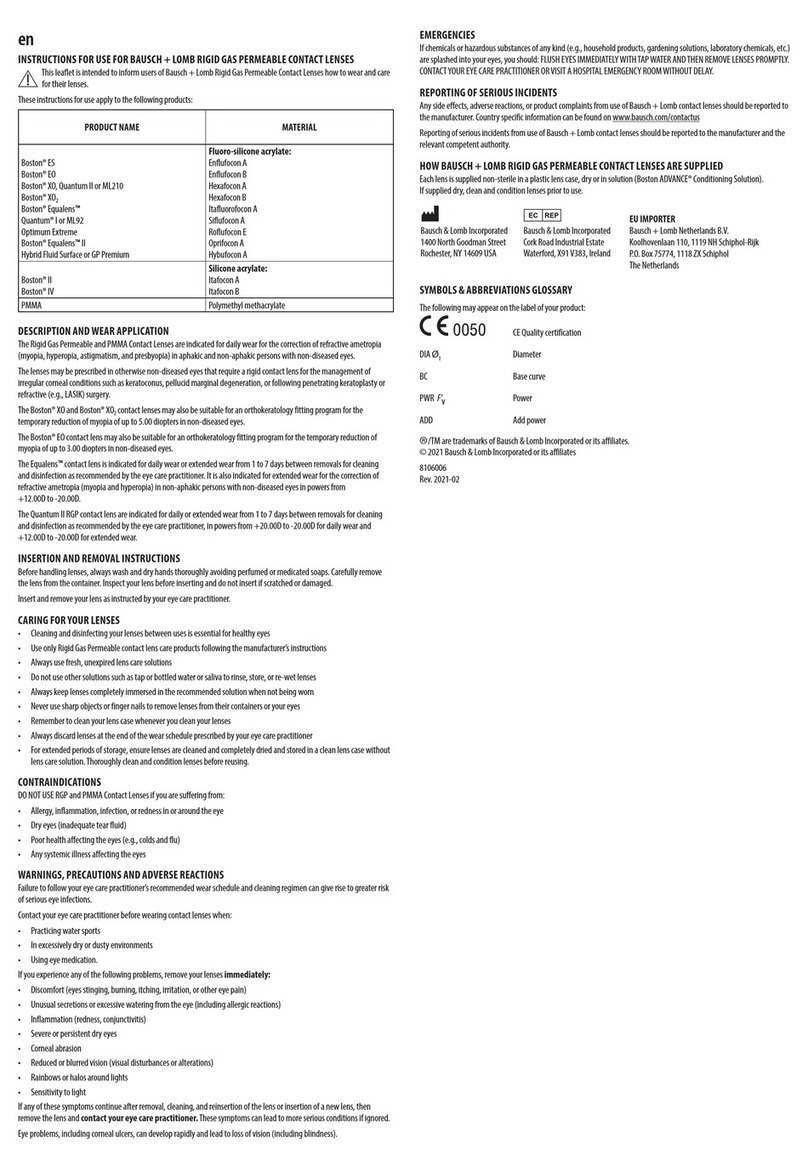
Bausch & Lomb
Bausch & Lomb Boston ES User manual

Bausch & Lomb
Bausch & Lomb SofLens 59 User manual

Bausch & Lomb
Bausch & Lomb Soflens daily disposable Toric hilafilcon B User manual
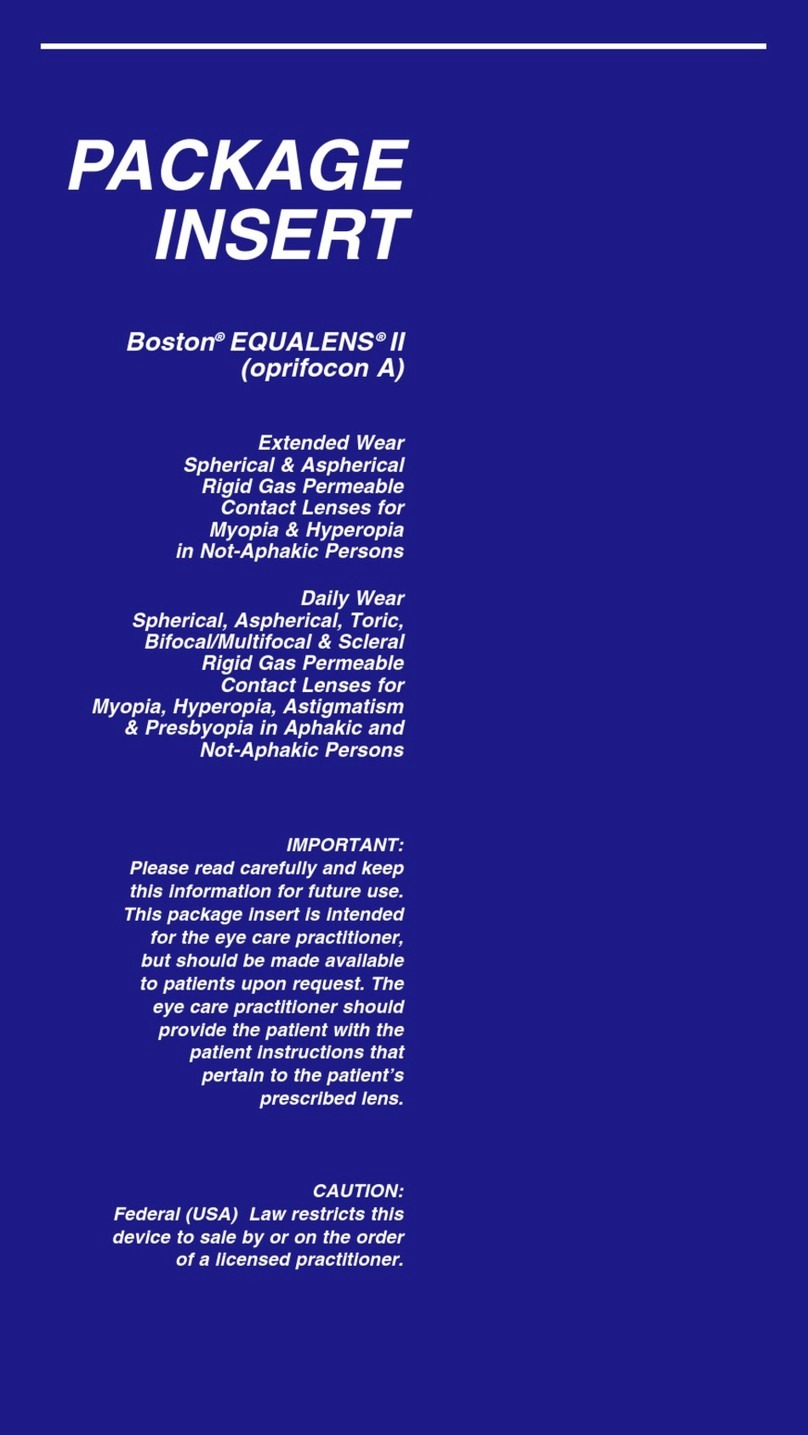
Bausch & Lomb
Bausch & Lomb Polymer Technology Boston Equalens II User manual
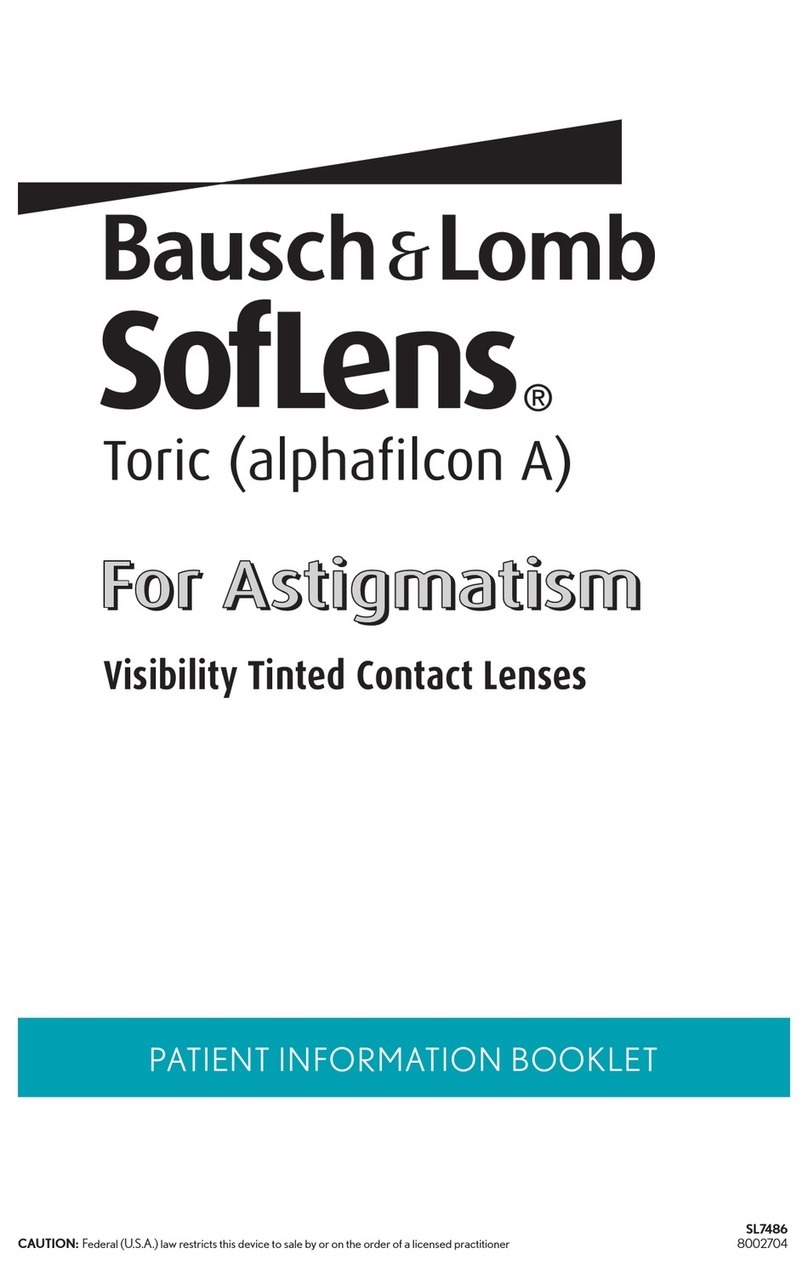
Bausch & Lomb
Bausch & Lomb SofLens Toric alphafilcon A User manual

Bausch & Lomb
Bausch & Lomb ULTRA User manual
